An ideal gas is taken round a cyclic thermodynamic process ABCA as shown if Fig. If the internal energy of the gas at point A is assumed zero while at B it is 50 J. The heat absorbed by the gas in the process BC is 90 J.
(a) What is the internal energy og the gas at point C ?
(b) How much heat energy is absorbed by the gas in the process AB?
(c ) Find the heat energy rejected or absorbed by the gas in the process CA.
(d) What is the net work done by the gas in the complete cycle ABCA ?

Given that UA=0,UB=50J and QBC=90J
Also PA=PB=10Nm−2,PC=300Nm−2,VA=1m3
and VB=VC=3m3
a. In process BC as volume of gas remains constant, work done by gas in this process is zero, thus
WBC=0
Heat abosrbed by the gas is QBC=90J. From the first law of thermodynamics.
(ΔU)BC=UC−UB=QBC−WBC=90J−0=90J
UC=(ΔU)BC+UB=90J+50J=140J
b. In process AB, we have
(ΔU)AB=UB−UA
=50−0=50J
work done is given as
WAB = area under AB in P - V diagram
= area of rectangle ABED
=AB×AD=(3m3=1m3)×10Nm−2
=20J
Thus heat abosrbed by the system is
QAB=(ΔU)AB+WAB=50+20=70J
c. For process CA
(ΔU)CA−UA−UC=0−140=−140J
Work done is given as
WCA= area ACED
= area of triangle ACB + area of rectangle ABED
1/2×AB×BC+AB×AD
=1/2×(3−1)m3×(30−10)Nm−2+20
=20+20=40J
In this process, the volume decreases, the work is done on the gas, Hence, the work done is negaitve,
Thus,
WCA=−40J
Thus heat rejected by the gas is
QCA=(ΔU)CA+WCA=−140−40=−180J
Net work done in the complete cyclic process ABCA is
W=area of triangleABC=12×2×20=20J
As the cycle is anticlockwise, net work is done on the gas.
Topper's Solved these Questions
- BOOK - CENGAGE PHYSICS ENGLISHCHAPTER - KINETIC THEORY OF GASES AND FIRST LAW OF THERMODYNAMICSEXERCISE - Solved Examples14videos
KINETIC THEORY OF GASES AND FIRST LAW OF THERMODYNAMICS
- BOOK - CENGAGE PHYSICS ENGLISHCHAPTER - KINETIC THEORY OF GASES AND FIRST LAW OF THERMODYNAMICSEXERCISE - Exercise 2.120videos
KINETIC THEORY OF GASES AND FIRST LAW OF THERMODYNAMICS
- BOOK - CENGAGE PHYSICS ENGLISHCHAPTER - KINETIC THEORY OF GASESEXERCISE - Compression2videos
KINETIC THEORY OF GASES
- BOOK - CENGAGE PHYSICS ENGLISHCHAPTER - LINEAR AND ANGULAR SIMPLE HARMONIC MOTIONEXERCISE - Single correct anwer type14videos
LINEAR AND ANGULAR SIMPLE HARMONIC MOTION
Similar Questions
An ideal gas follows a cyclic process as shown in figure. Internal energy of gas at point A is 10 J while at B is 70 J. the heat absorbed by gas in BC is 120 J.
(a) How much heat is absorbed in process AB?
(b) Find heat energy rejected or absorbed by gas in process CA.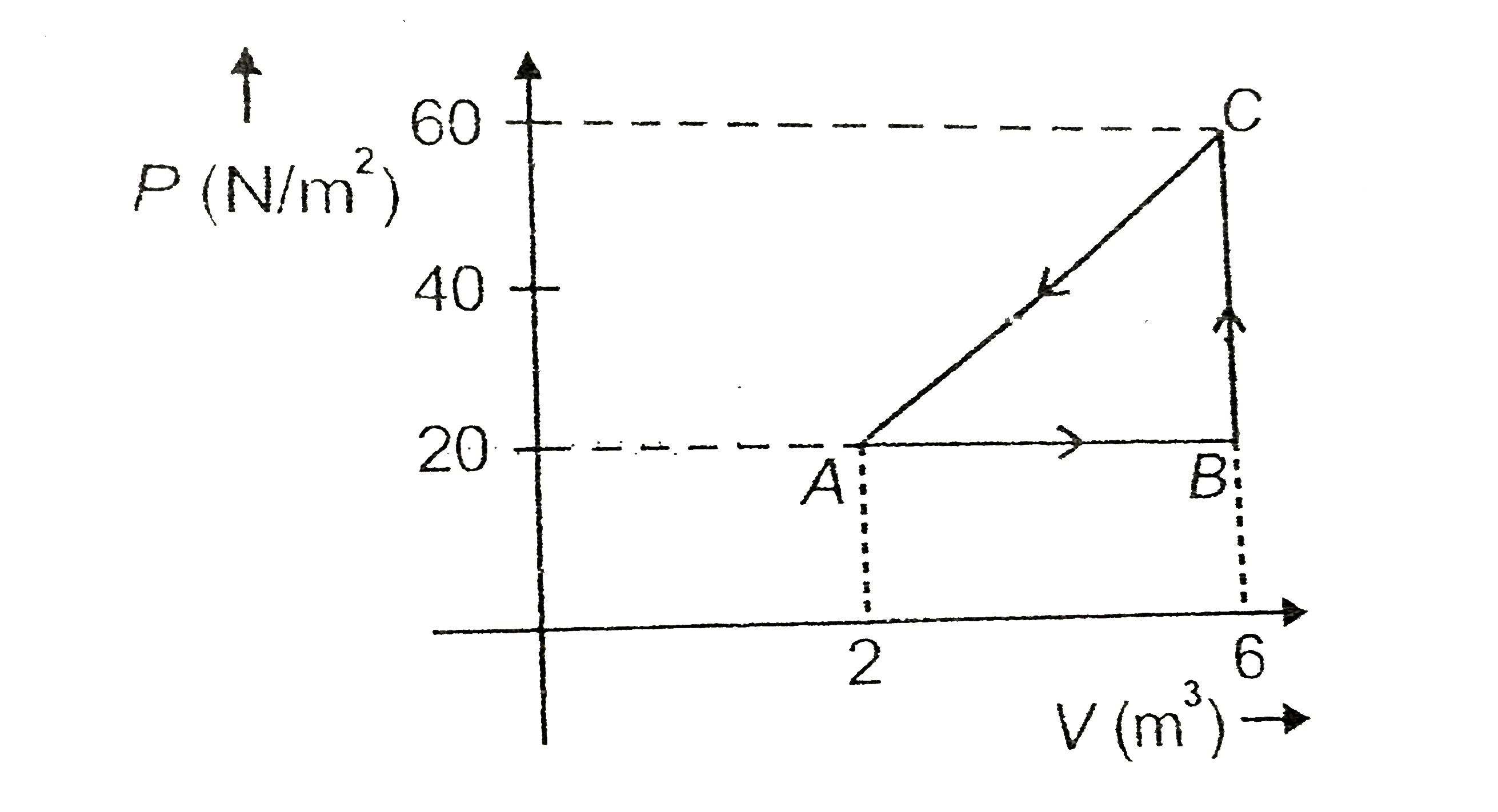 View Solution
View SolutionA gas is taken through a cyclic process ABCA as shown in, if 2.4 cal of heat is given in the process, what is the value of J ?
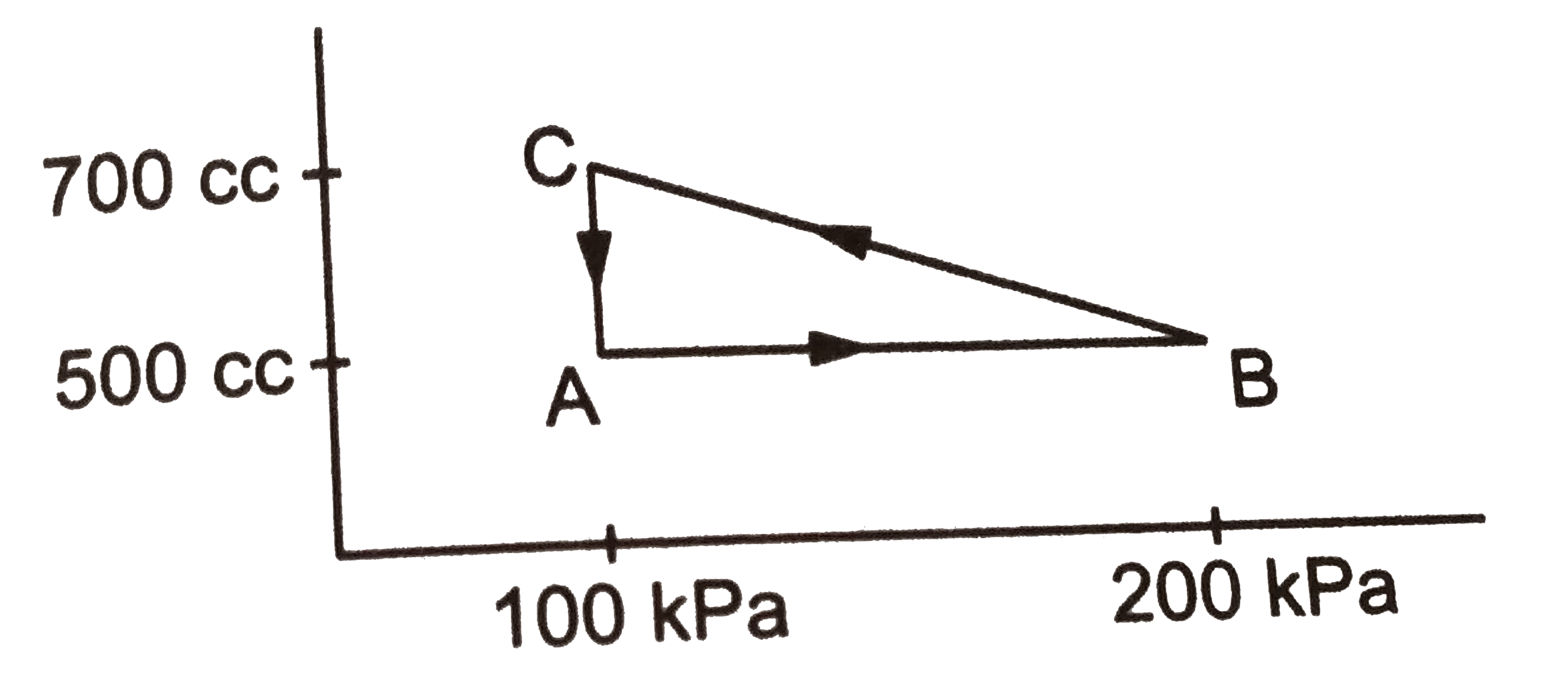 View Solution
View SolutionA gas is taken through a cyclic process ABCA as shown in, if 2.4cal of heat is given in the process, what is the value of J ?
 View Solution
View SolutionOne mole of ideal monoatomic gas is taken round the cyclic process as shown in figure.
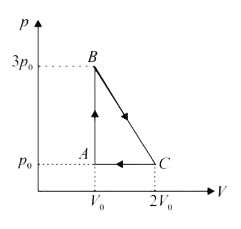
The heat rejected by the gas in the path CA is ………...and the heat absorbed by the gas in the path AB is ………...........View Solution
A sample of an ideal gas is taken through the cyclic process abca and shown in the figure. The change in the internal energy of the gas along the path ca is −180J. The gas absorbs 250J of heat along the path ab and 60 J along the path bc. the work done by the gas along the path abc is:View SolutionAn ideal gas is taken through the process ABC as shown in figure. If the internal energy of the substance decreases by 10000J and a heat of 7159 cal is released by the system, calculate the value of meachanical equivalent of heat (J).
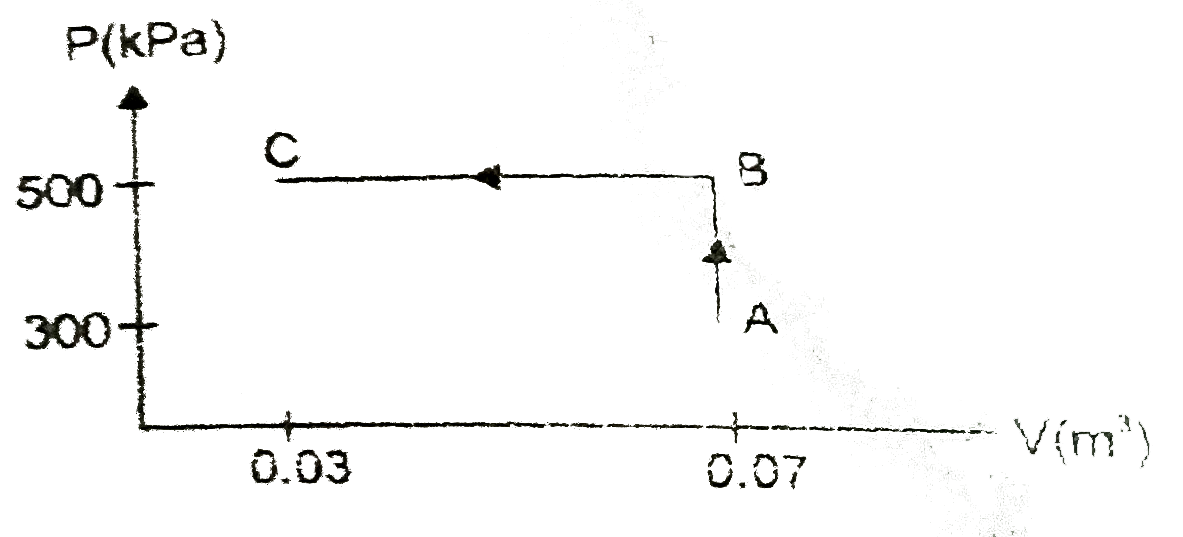 View Solution
View Solution0.5 moles of an ideal monoatomic gas undergoes a thermodynamic process from A to B as shown in figure. The change in internal energy of the gas during the process from A to B is
View SolutionHeat taken from a gas in a process is 80 J and increase in internal energy of the gas is 20J. Find work done by the gas in the given process.
View SolutionA gas is taken along the path AB as shown in fig, if 70 cal of heat is extracted from the gas in the process, calculate the change in the internal energy of the system.
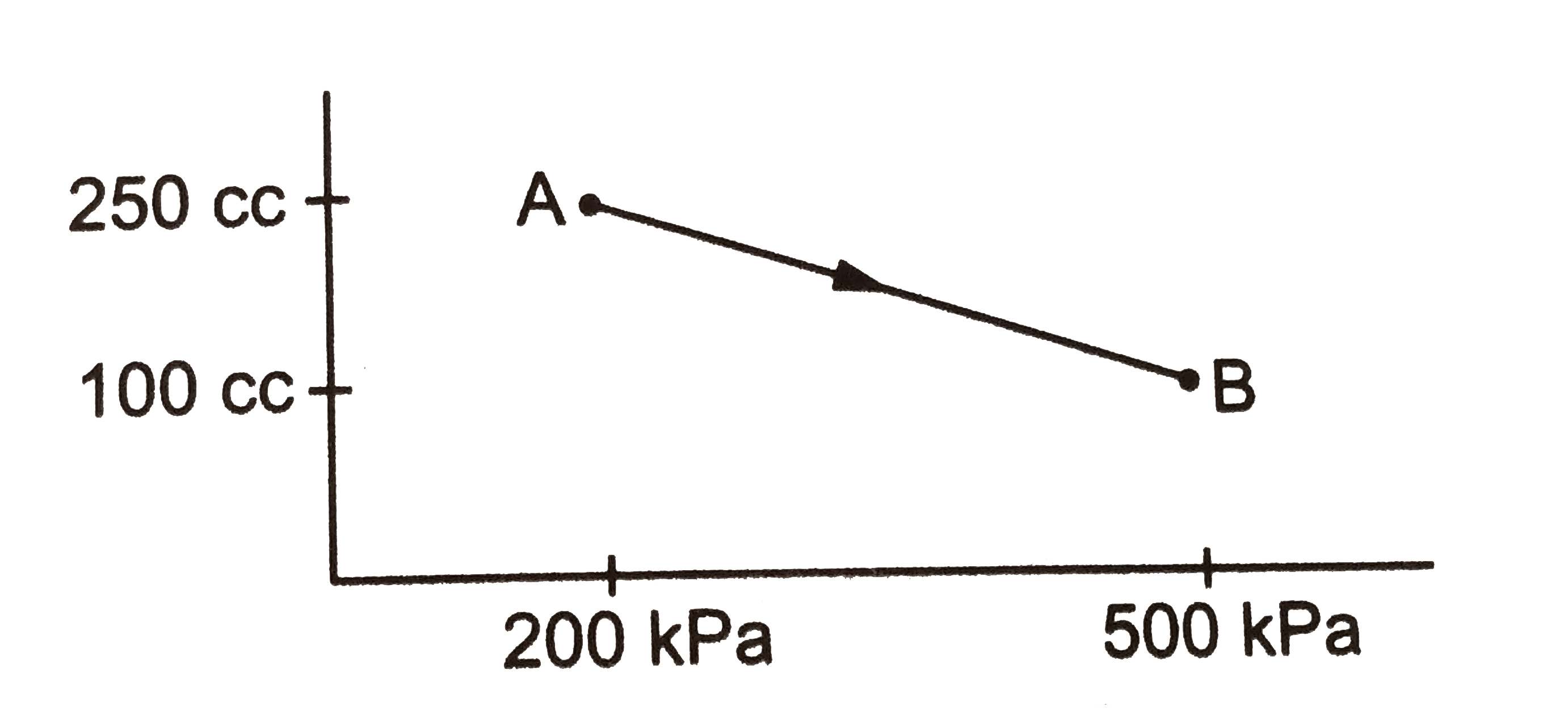 View Solution
View SolutionOne mole of an ideal monatomic gas is taken round the cyclic process ABCA as shown in figure. Calculate
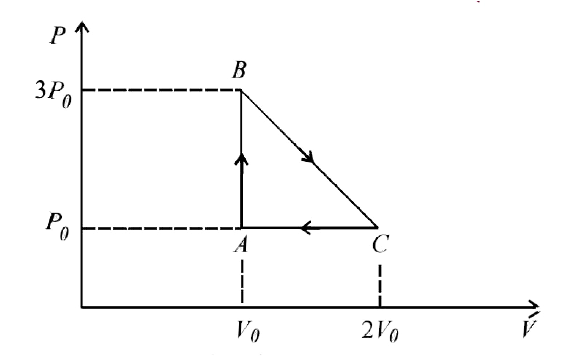
(a) the work done by the gas.
(b) the heat rejected by the gas in the path CA and the heat absorbed by the gas in the path AB,
(c) the net heat absorbed by the gas in the path BC,
(d) the maximum temperature attained by the gas during the cycle.View Solution

